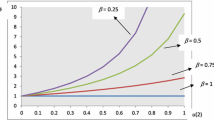Abstract
The time-series analysis of disaggregated data for a sample of 28 private industries verifies the prevalence and sources of asymmetry in aggregate data. The evidence indicates that asymmetry in the cyclical behavior of the real wage is widespread across the U.S. economy. The reduction in the real wage during recessions appears pronouncedly larger compared to the increase in the real wage during expansions in many industries. Across industries, price inflation increases faster compared to nominal wage inflation in the face of higher demand variability. Price flexibility moderates the increase in the real wage and output growth during expansions. In contrast, prices appear more downwardly rigid compared to the nominal wage in the face of demand variability. Price rigidity exacerbates the reduction in the real wage and output contraction during recessions. The combined evidence supports the implications of the sticky-price explanation of business cycles.
Similar content being viewed by others
Author information
Authors and Affiliations
Corresponding author
Additional information
First version received: June 2003/Final version received: June 2004
The author thanks an anonymous referee for helpful comments on an earlier draft of the paper. The views expressed in this paper are those of the author and should not be interpreted as those of the International Monetary Fund.
Rights and permissions
About this article
Cite this article
Kandil, M. Countercyclical or procyclical real wages? A disaggregate explanation of aggregate asymmetry. Empirical Economics 30, 619–642 (2005). https://doi.org/10.1007/s00181-005-0253-9
Issue Date:
DOI: https://doi.org/10.1007/s00181-005-0253-9



